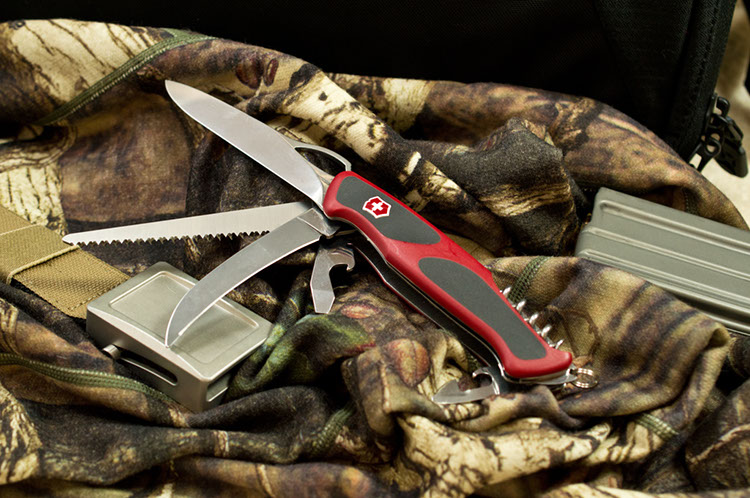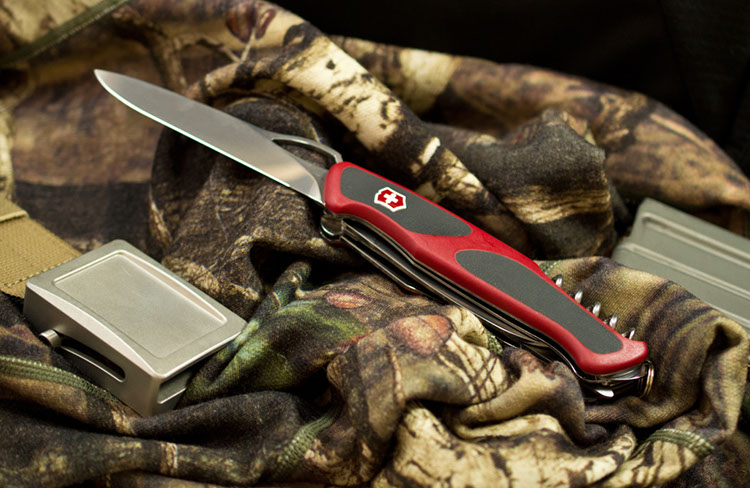
The Swiss Army Knife is probably the world's best known and most recognizable knife. Having existed in some form or another for over 100 years, these simple knives have been carried and used around the world by millions of people, and are much-appreciated for their simplicity, craftsmanship and durability.
But anyone that's done even a modicum of research on the subject would tell you that there is actually two Swiss Army Knives; one made by Victorinox and another by Wenger. Both brands are roughly the same age and both use similar layouts, and for the majority of their existence, both have had an amicable relationship. In fact, in 1908 the Swiss government split their military's knife acquisition contract between the two manufacturers, and Victorinox and Wenger even reached an advertising agreement in which Victorinox would advertise their wares under the slogan "The Original Swiss Army Knife" while Wenger would market their product as the "Genuine Swiss Army Knife."
After a century in business, the Wenger company ended up in crisis after the terrorist attacks of 9/11 left their sales crippled. As travellers could no longer carry knives, sales at duty free shops fell abysmally, while Victorinox' more diverse product portfolio allowed them to weather the storm far better. As a result Victorinox, a company well-known for their Swiss pride and appreciation for history, eventually purchased Wenger in 2005 in an effort to keep the historic company's ownership in Switzerland.
As of this year, the two companies have officially merged, with Victorinox folding bringing some key components of Wenger's knife designs into their lineup, and calling them the Delémont Collection. Delémont being the city in which Wenger was formerly based. This knife here, the Victorinox Delémont Hunter, takes it's platform and shape from the Wenger RangeGrip line of knives, but sees it fitted with Victorinox's ubiquitous tweezers, pliers, and famous can opener. And of course, the release for the main blade's locking system is no longer the square Wenger logo; that's been replaced by Victorinox's Swiss cross-in-a-shield logo.

The knife also carries the well-known Victorinox can opener/small screwdriver combo, a crosscut saw, a bottle opener/large screwdriver of Wenger's design, a corkscrew, a set of Victorinox tweezers and toothpick, an awl, and the pièce de résistance; a large gutting blade. All other tools do not lock in place.
In use, the Delémont Hunter is quite specific. It is too large for most daily tasks and the gutting blade occupies a slot that, in many other models, is taken up by tools that may be far more useful on a daily basis. Otherwise, most of it handles and feels like any other Swiss Army Knife; tools deploy smoothly and with that telltale "click" noise, and the quality is superlative. The only major difference is the scales. Eschewing the high-gloss red scales that have served as the brand's biggest identifiable feature, the Delémont Hunter uses a softer red plastic with a matte finish and incorporates two rubberized panels. This provides a lot more grip, which will be a real boon when it comes time to deploy that gutting blade.
It also means the Delémont Hunter may not wear quite like the Swiss Army Knives we're used to. That liner lock release button, for example, got a few small scuffs in it from our fingernails and the matte finish of the red plastic got those telltale shiny streaks from rubbing against other, harder objects. It's worth noting however that none of these issues were anything but cosmetic and we don't suspect that the knife's function will be adversely effected as we continue to use it.